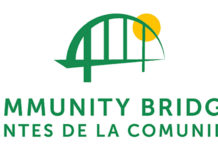I wanted to take a friend on a special outing last month, but I struggled to come up with something that would be different, fun and memorable. Almost at the last moment, I decided we’d go to the horse races — and, man, it could not have worked out better.
I hadn’t been to see the ponies in decades, and my friend had never been. The weather was perfect, the race facility and surroundings were incredibly beautiful, and the horses were magnificent.
Horse racing is an ancient sport. Scheduled and organized contests appear in civilization’s earliest written histories — Roman chariot races are just one example — and in the oral legends of earlier millennia.
The first record of organized horse racing in the U.S. dates to a community track in what is now Long Island, New York, in 1665. By 1890, there were 314 official track operations in the United States, but by then, Thoroughbred horse racing had been known elsewhere as “the sport of kings” for 400 years.
That was thanks to the first in the long line of English kings named Henry, who imported Arab stallions to mate with strong English mares and give the crown’s horses more speed and power in periodic races against horses owned by other nobility. By the time of Henry VII, Thoroughbreds were a distinct and tightly registered variety — to this day, Thoroughbred horses that compete in organized racing (technically termed “flat racing”) must be registered in the official national studbooks of their country of birth.
Quarter horse racing is also popular in parts of the country. American quarter horses are ranch or working-type horses that race short distances, but cover that ground at amazing speeds.
Harness racing for standardbred horses — where the horse pulls a two-wheeled surrey cart — is a popular class in the eastern U.S., and it is more popular than Thoroughbred racing in Canada and parts of Europe.
For many, wagering on the outcome is an intrinsic part of all public contests, and the link between horse racing and gambling has been both nourishment and disease to the sport. Temperance and morality laws were enacted in the early 1900s, including the rabid prohibition of alcohol and aggressive enforcement of antigambling regulations. While that actually stimulated alcohol production and consumption, it nearly eliminated horse racing altogether.
It was the introduction of pari-mutuel wagering that saved the day. No longer a bet against the house, gaming on horses is now tantamount to buying shares in the animal’s performance. The collected funds from all wagers placed on a given race are pooled, with those who invested in the winner dividing the net proceeds.
It was Golden Gate Fields where I went last weekend, hard by the San Francisco Bay near Berkeley and just about the last remaining full-time venue in our area. It continues to be a premier racecourse, attracting some of the best horses and jockeys in the country — but once, we had three world-class tracks to choose from.
Tanforan Racetrack in San Bruno was a Thoroughbred facility dating to 1899. Racing there was interrupted only in the early days of the World War II internment of people of Japanese heritage living on the West Coast, when the track was used as an assembly center. About 8,000 people of Japanese ancestry (mostly native-born Americans) were housed in Tanforan’s stables and in barracks built in the track’s big infield. Racing resumed after the war and continued until the track structures burned down in 1964. I probably don’t need to tell you it was replaced by a shopping center.
Bay Meadows Racecourse in San Mateo, built on the site of an old airfield, ran continuously from 1934 until its closure in August 2008. The famed horse Seabiscuit won races there in 1937 and 1938, and Hall of Fame jockey Bill Shoemaker began his career as an exercise boy at the track. It was torn down last year, and the city plans to develop the Bay Meadows site for office and retail space, plus 1,250 residential units.
Golden Gate Fields ran its inaugural event in 1941, attracting crowds of 20,000 or more well into the 1970s. It has long been the home of Hall of Fame jockey Russell Baze — my friend and I watched him add another to his list of 5,000-plus career victories last weekend.
Just off of Highway 80 in Albany, the beautifully landscaped track offers incredible views of the Oakland Hills to the east and the San Francisco skyline across the waters of the bay to the west.
There are lots of reasons to go see the ponies. Besides watching Thoroughbred horses do what they love doing, it’s an extremely enjoyable outing for any occasion. Children are usually allowed free entry, and the horses and the aura of excitement fascinate them no end. There are sure to be folks at the track who are serious about their wagering, but the open and spacious facility is by no means a nefarious gambling den. It is a very family-friendly atmosphere, and kids were running all about on the day I attended.
Should you wish to get away from all that, there are luxury boxes and exclusive dining and drinking areas. In addition to the amazing horses, there is music and other entertainment throughout the day. Oh, yeah, and there’s the betting. That can be fun, too — two bucks will definitely get you involved in the race.
If you’ve never attended a track race, you need to know exactly what you’re missing. It really is a vibrant atmosphere of fun, excitement and connection to tradition. The season runs through Dec. 12, and it’s a magical outing, rain or shine.
• Steve Bailey of Boulder Creek has spent plenty of time in recreational activities. Contact him at sb*****@****io.com.










